13+ Sample Office Safety Inspection Checklist
-
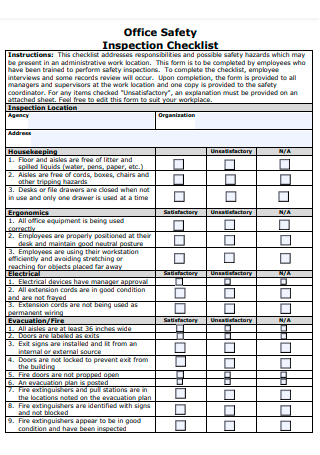
Office Safety Inspection Checklist Template
download now -
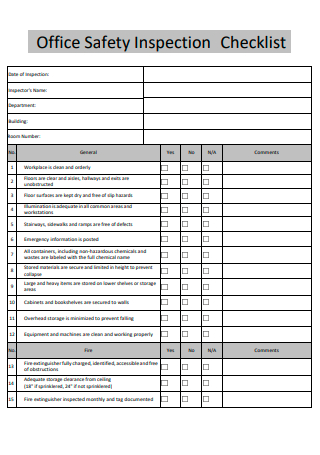
Basic Office Safety Inspection Checklist
download now -
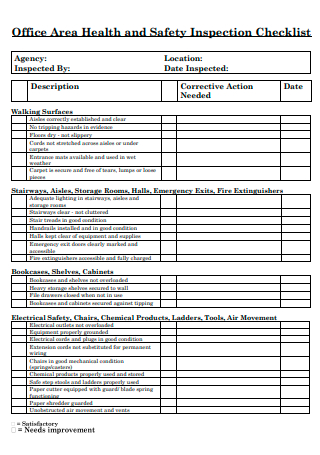
Office Area Health and Safety Inspection Checklist
download now -
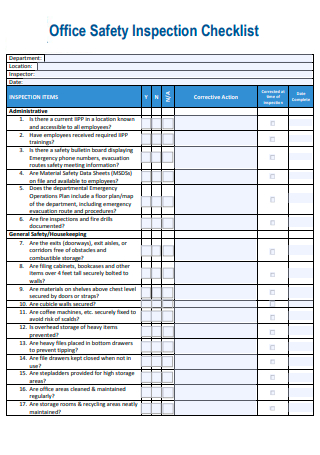
Formal Office Safety Inspection Checklist
download now -
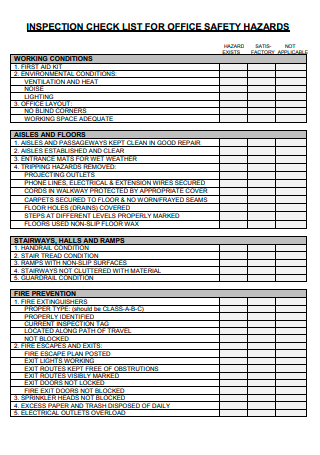
Office Safety Hazards Inspection Checklist
download now -
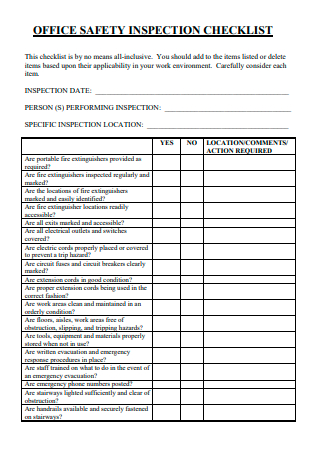
Standard Office Safety Inspection Checklist
download now -
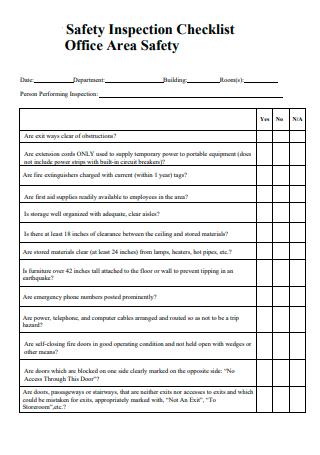
Office Area Safety Inspection Checklist
download now -
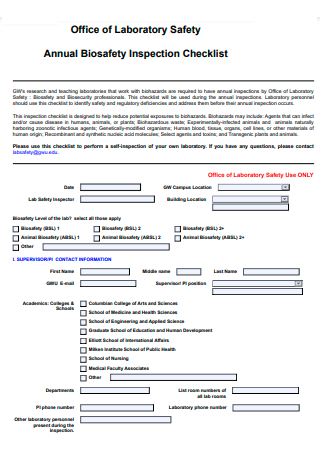
Office of Laboratory Safety Inspection Checklist
download now -
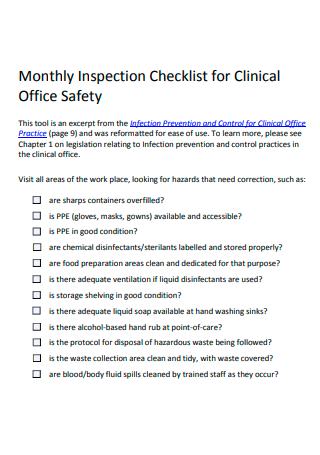
Clinical Office Safety Monthly Inspection Checklist
download now -
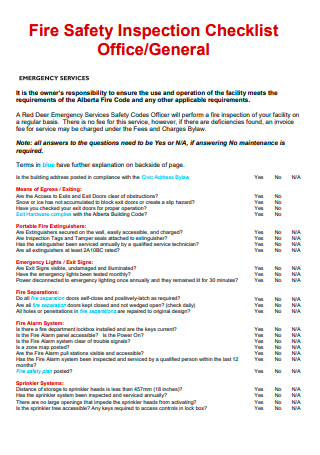
Office Fire Safety Inspection Checklist
download now -
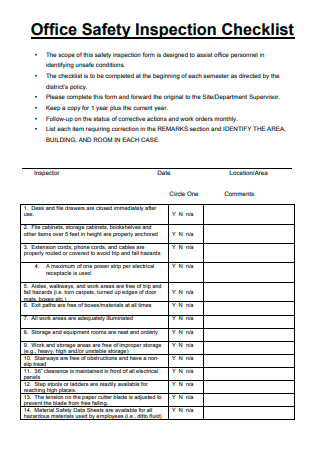
Office Safety Inspection Checklist Example
download now -
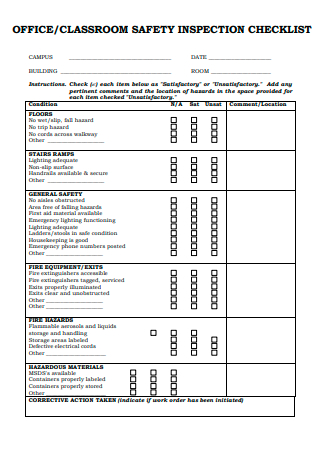
Office Classroom Safety Inspection Checklist
download now -
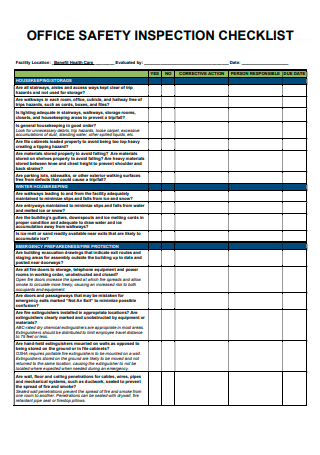
Sample Office Safety Inspection Checklist
download now -
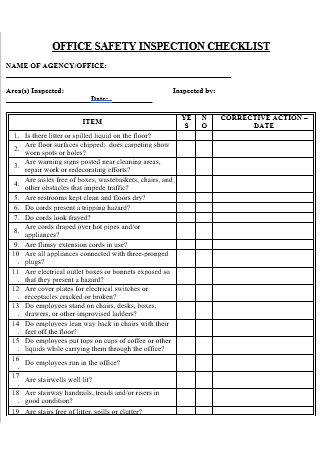
Office Safety Inspection Checklist in DOC
download now
FREE Office Safety Inspection Checklist s to Download
13+ Sample Office Safety Inspection Checklist
What Is an Office Safety Inspection Checklist?
Tips For Maintaining the Safety of an Office
Some Examples of Hazards in the Office
Steps in Making an Effective Office Safety Inspection Checklist
FAQs
What are examples of fire hazards in the office?
What is a Hazard?
What is a Safety Inspection?
Is risk different from a hazard?
What Is an Office Safety Inspection Checklist?
To answer that question, an office safety inspection checklist is a business document that is used to address any form of responsibilities that the office workers may have and also to address any possible safety hazards which may be present in any kind of workplace. This inspection checklist must be performed and completed by qualified personnel (an example would be employees who have received proper safety training and can perform inspections effectively).
Whenever office safety inspections are performed, every employee will be interviewed regarding their experiences and safety concerns about the entire workplace. A thorough review of the office’s safety records will also take place. After the inspection is completed, the managers and supervisors of the workplace will receive a copy of the checklist. Most importantly, an additional copy of this document will also be passed on to the appropriate safety coordinator of the office.
Tips For Maintaining the Safety of an Office
Here are some of the tips that one can follow if they want to keep the safety levels of the office at an optimum level:
Some Examples of Hazards in the Office
Here are examples of the various hazards that one can encounter inside an office setting:
Steps in Making an Effective Office Safety Inspection Checklist
The responsibility of making sure that the office environment is safe to work at lies at the shoulders of the managers and safety officers. If they fail to do so, the hazards that show up as a result of negligence can cause unnecessary harm to everyone inside the office. With that being said, here are the steps to follow in making an office safety inspection checklist:
-
1. Start With the Basic Details
As you start writing the office inspection checklist, it is important to begin with the basic details first. This includes the name of the establishment, the address, and the date that the workplace inspection is to be conducted. You can also include here the names of the office manager and the designated safety officer who will conduct the office inspection.
-
2. List Down the Items Concerning the Overall Safety
After writing the basic information, now it is time to write the main parts of the inspection checklist. An ideal method to be followed here is to divide the areas of safety into categories to avoid being all over the place. For this step, we will begin writing down the items concerning the general safety of the office. This includes the floors, stairways, lightings, proper warning signs near potential hazards, presence of emergency evacuation plans, presence of proper health and safety information, and updated emergency contact numbers to the nearest police station, the nearest hospital, the local security, and most of all, the front desk of the building.
-
3. List Down the Items Concerning Electrical Safety
When you’re done with items regarding basic safety, you can now proceed to write down the items relating to electrical safety. This includes enough clearance between electrical panels, the good condition of all the electrical plugs that are present in the office, and the proper routing of any extension cords that are in use in the office space.
-
4. List Down the Items Concerning Fire Protection
Since fires are one of the most dangerous hazards that can be found in the office, this category of items should not be skipped when making the inspection checklist. For this step, include the items regarding fire safety, such as the presence of working fire alarms, the presence of fully working, properly maintained, and easily accessible fire extinguishers, and the presence of well-lit and easily identifiable emergency exit or fire exit signs.
-
5. List Down the Items Concerning Furniture and Office Equipment
The hazards that office furniture can pose can be so easily overlooked in an office setting since they are well unnoticeable for an untrained eye. For this step, you want to list down the items regarding the furniture and office equipment, such as secured heavy and large items, neat and orderly storage rooms, secured cabinets and bookshelves, and making sure that the desks and any file drawers present do not prove to be an obstruction in the workplace.
-
6. List Down the Items Concerning Ergonomics and Conclude the Checklist
Ergonomical safety is also one of the safety issues that are heavily overlooked in an office setting. For this step, start by listing down the items concerning ergonomics, such as the presence of fully adjustable chairs in the employee’s respective desks, availability of footrests, and properly adjusted monitors according to an employee’s height.
Now that every category in the checklist has been completed, you can now conclude the checklist by giving it a simple verification process. You may have any duplicate items listed or any items that are totally omitted which can result in the inspection process going all over the place. When you are absolutely sure of the created checklist, the inspection can begin.
FAQs
What are examples of fire hazards in the office?
The fire hazards that can be found in the workplace include damaged power cords, the presence of any combustible materials in the office, blocked escape routes that can hamper evacuation in the event of a fire, overloaded extension sockets and overheating extension leads, and any kinds of faulty computer equipment. These fire hazards have a great risk of leading to loss of data and even loss of lives when neglected.
What is a Hazard?
A hazard can be classified as a factor or a circumstance that has the potential to cause harm in the form of human injury or illness, property damage, or environmental damage. Hazards that are found in the workplace can come from a variety of different sources, which can include loud machinery, a moving forklift, chemicals, electricity, working at heights, a repetitious task, or improper behavior, all of which can jeopardize a worker’s safety and health.
What is a Safety Inspection?
A safety inspection is a structured and adequately documented procedure for identifying workplace dangers. This is frequently performed by an accredited safety officer. Safety inspections can take many various forms depending on the environment being tested, but they all compare results to approved criteria to verify that a particular environment is safe. As stated in this article, one of the most effective ways to conduct a safety inspection is through the use of an inspection checklist. A safety inspection can also be referred to as a safety audit.
Is risk different from a hazard?
Yes, it is entirely different from a hazard. Though these two terms are thrown around interchangeably, risk refers to the likelihood or probability that a person would be injured or suffer an undesirable health outcome if exposed to a particular hazard. Risk may also apply to instances involving the loss of property or equipment, as well as negative environmental repercussions.
Having an effective office safety inspection checklist in hand will prove to be a massive help whenever an office inspection is being conducted. Making sure that the procedure is done effectively and efficiently is one of the biggest reasons why one should resort to using this document. When office safety is valued, it ensures that all the employees are always motivated to go to work every day and it also helps ensure that they return home safely at the end of their shift. In this article, examples of an office safety inspection checklist can be easily acquired for personal use.
